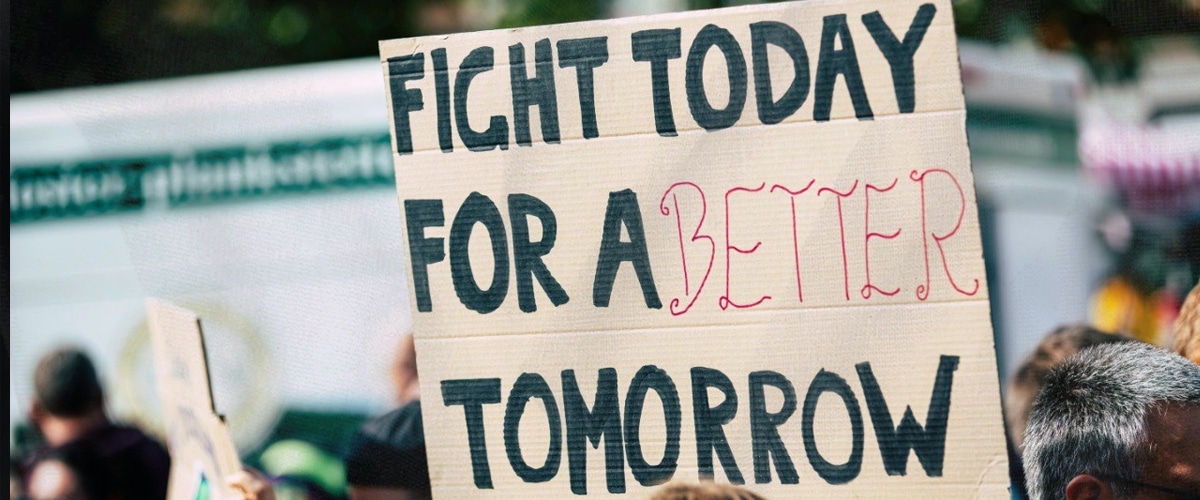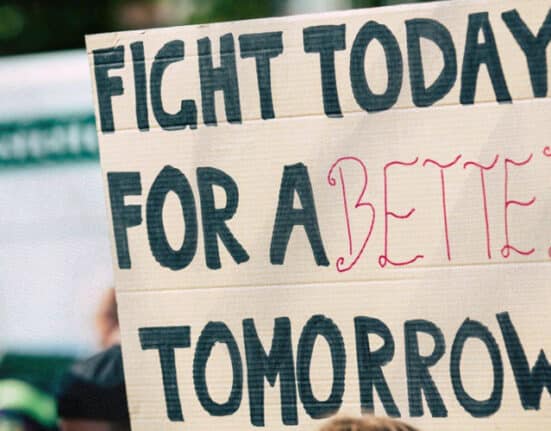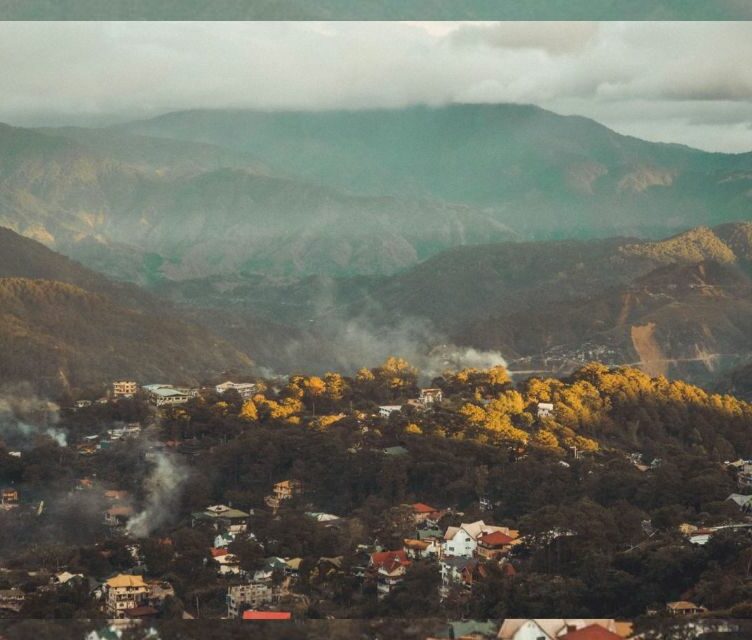FOR some, the economy is more truthfully reflected in the numerics— in the careful precision of inflation rates, in the steady climb of GDP growth, in bar graphs and pie charts that neatly plot our position on the map of national development.
Everything is measured, orderly, and seemingly easy to understand. It is within these figures that many find a sense of comfort, perhaps even a version of the truth—believing that through numbers, one can faithfully trace the nation’s path forward.
But for many others— especially for the generation who grew up in the wreckage of recessions, the aftermath of a pandemic, and the fast-changing transition to the digital age— the truth feels messier than any chart can convey.
How do we measure the cost of working two jobs and sacrificing your education to provide for your family?
How do we capture in statistics the feeling of watching your loved ones leave the country, knowing you won’t be able to see them for years to come?
How do we graph the quiet grief of seeing a family member suffer just because we couldn’t afford to provide immediate and quality healthcare for them with our minimum wage?
As President Bongbong Marcos’ SONA draws near, we once again find ourselves compelled to examine the contrast between two narratives—what the data tells us, and what we, in our everyday realities, actually live through.
And for some of the Gen Z workforce experiencing the economy on the ground, the disconnect between the two is hard to ignore.
What the numbers say
On paper, the Philippine economy appears to be making progress—especially when it comes to taming inflation.
According to the Philippine Statistics Authority (PSA), headline inflation has eased considerably over the past year, falling from a high of 4.4% in mid-2024 to just 1.4% by June 2025.
This continued downtrend places the figure comfortably within the Bangko Sentral ng Pilipinas’ projected range of 0.9% to 1.7% for the month, suggesting a level of price stability that had eluded the country in the aftermath of the pandemic.
Meanwhile, the labor market tells a more nuanced story.
PSA data shows that employment remained relatively strong throughout the year, with the employment rate ranging from 95.3% to 96.9%.
The unemployment rate, too, stayed relatively low—dropping to 3.1% in June and December 2024 and resting at 3.9% by May 2025.
But beneath these positive numbers is a sign of strain: underemployment. That is, the share of employed Filipinos who are still looking for more hours or better jobs.
This rate surged to 14.6% in April 2025—the highest in the year-long dataset—and only slightly improved to 13.1% in May. The trend suggests that while people may have jobs, they’re not always the kind that provide sufficient income or security.
While these figures might provide stability, they don’t always reflect the full picture— especially for young Filipinos still on the early steps of their career ladder.
The numbers might say that they’re employed, but when rent, food, and daily expenses stretch paychecks thin, employment alone becomes an insufficient measure of progress.
Economic health can’t be measured solely by statistical progress. It lives in the quality of the jobs we hold, in how far a peso stretches at the market, and in whether we can dream beyond surviving.
And more often than not, those living on the margins—young people, students, contract workers—feel the disconnect between “recovery” and reality most acutely.
Gen Zs like CJ Zamora and Piel Catipon know this all too well.
Not everyone gets to graduate
Graduation season is always bittersweet for Christine Jane “CJ” Zamora, 25.
With each round of diplomas and photo ops, she scrolls through her feed, leaving heartfelt greetings for the friends she started college with—three batches from three different courses she tried to finish, but never could.
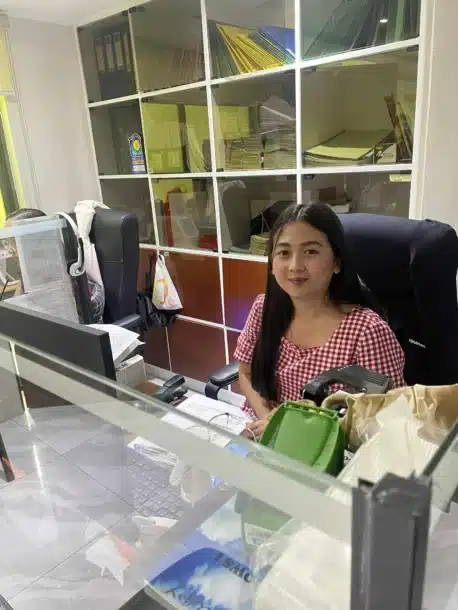
Christine Jane “CJ” Zamora at her work as an accountant clerk.
“Galing po ako sa isang broken family. Sa aming dalawang magkapatid, isa lang kaya pag-aralin ni Mama dahil may pamilya na din siya sa Singapore,” narrated CJ during our interview.
CJ grew up in the rural town of Siniloan, Laguna, and studied at a public high school where she consistently earned a spot on the honor roll.
She spoke with pride about her high school days—especially the academic competitions where she got to showcase her sharp intellect. But despite all signs pointing to a bright future, one thing kept getting in the way: financial instability.
“Laki po ako sa Lola ko. Matanda na din— ‘di na din ako masuportahan sa pag-aaral, kaya naisipan ko po mag working student,” she said.
It was never about a lack of determination. CJ valued her education deeply. But sometimes, even grit and brilliance aren’t enough to overcome the weight of economic hardship.
She tried a lot of times to continue her education. But the economics of life always got in the way.
“Tatlong beses po ako tumigil at tatlo din po kurso ang tinake ko dun sa mga pagtigil ko. Journalism, Architecture at Accountancy,” said CJ.
Her journey began in 2019, when she earned a spot at the Polytechnic University of the Philippines (PUP) in Sta. Mesa, Manila, under the Journalism program.
Though PUP is a tuition-free state university, the daily burden of commuting, meals, and school requirements still proved too heavy—costs she and her family couldn’t always shoulder.
In her second attempt, she found a sponsor and enrolled in the Architecture program at New Era University (NEU). For a time, it felt like things were finally falling into place. But when her sponsor could no longer provide support, CJ had no choice but to withdraw once again.
Her third try—this time under an Accountancy course—was cut short by a more personal sacrifice. The line between studying and surviving became impossible to balance.
“’Yung huling rason ay dahil hindi kaya hatiin ang sweldo sa pang-aral at sa pamilya,” she said.
“Kulang nabibigay sa pamilya, lalo na’t mababa ang sahod sa probinsya kaya sinubukan ko makipagsapalaran sa Maynila.”
Now, CJ works as an accounting clerk in a small business in Metro Manila—earning more than she ever could back in her rural hometown. She needs the job as the acting breadwinner for their family.
But even with the bigger paycheck, it’s barely enough to stretch across her own needs and the responsibilities she carries for her family.
“Hindi sapat ang kinikita ko dahil nagkukulang din po. Bukod ang pagkain at bills para sa pamilya at meron din po akong bayarin sa bills at sa nirerentahang apartment,” said CJ.
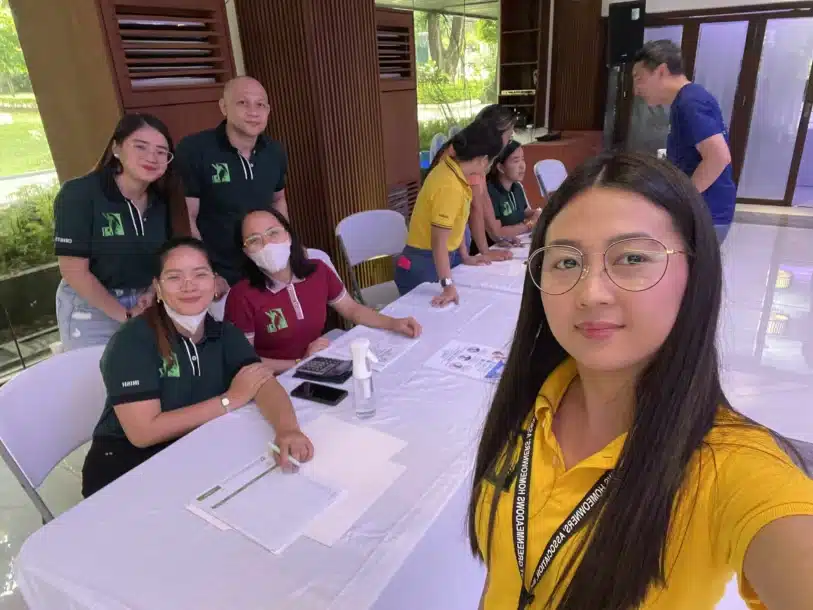
CJ with her colleagues.
“Kung ikukumpara ko po dahil bago lang po ako sa Manila, akala ko mas mataas ang sahod ko kesa sa probinsya. [Akala ko] may matitira pa, pero wala nang natitira dahil madaming bayarin at mataas ang presyo ng bilihin.”
What hurts more is the cost that can’t be counted in pesos: the distance, the exhaustion, and the ache of being alone in all of these.
“Sobrang hirap,” she said. “Dahil mababa po ang sweldo sa probinsya, naglakas loob po ako magtrabaho sa Manila dahil mas malaki po ang sahod. Napalayo po ako sa pamilya ko. Maunti na po ang oras sa pamilya na makasama dahil anim na araw po ako nagtatrabaho.”
Graduated but still left behind
While CJ never got to don the graduation toga, Piel Aubrey Catipon, 22, did.

Piel Aubrey Catipon, 22, works as a patient navigator.
Yet she found herself in a different kind of limbo—one where her degree, and the school she came from, weren’t enough to open the doors she hoped for.
Piel earned a degree in Tourism Management, at one of the largest public universities of Laguna. But now, she works in the medical field as a Patient Navigator in Los Baños Medical Hospital and Medical Inc.
“Yung trabaho ko sa ospital is nag-a-asisst ng patient regarding sa mga concern nila. Ni-recommend lang ako na kung gusto ko ng work. Bilang uhaw sa trabaho nung mga oras na yon at gusto kong kumita ng pera, kahit di ko alam yung trabaho nag-apply agad ako,” she said.
For Piel, her degree didn’t help much with her current work.
“Tourism Management ‘yung course ko at hindi ko talaga siya gusto. Wala rin kaming proper training or activities nung college na related sa course ko kaya lalo ko siyang hindi nagustuhan. Alam kong hindi ko sya magagamit sa future,” said Piel.
She recalled the desperation she felt after graduation—only to be turned away not because of a lack of jobs, but because of where she earned her degree.
For her, the problem wasn’t job scarcity, but the unrealistic qualifications employers demanded—even for entry-level roles.
“Sa tingin ko lang— base sa experience ko— marami talagang trabaho ang makikita lalo na sa mga website kung matiyaga ka talagang maghanap. Pero ang problema lang talaga is tinitignan nila ang background mo.
“Halimbawa na lang, mas gusto talaga nila is may experience related sa inaapplyan mo or minsan naman inaalam nilang mabuti saang school ka nagtapos.”
Back then, Piel thought that finishing college—regardless of her interest in the course—would be enough to find work. But she was wrong.
She chose her course out of pressure, not passion, just to avoid late enrollment. Shifting wasn’t an option either, as her family’s finances could only cover the bare minimum. Knowing how much had already been spent, she pushed herself to finish.
But graduation didn’t guarantee anything.
Despite earning her degree, she found herself turned away from job opportunities—not because she didn’t try, but because of where she graduated from.
“Sa tingin ko lang— base sa experience ko— marami talagang trabaho ang makikita lalo na sa mga website kung matiyaga ka talagang maghanap. Pero ang problema lang talaga is tinitignan nila ang background mo,” she said.
“Halimbawa na lang, mas gusto talaga nila is may experience related sa inaapplyan mo or minsan naman inaalam nilang mabuti saang school ka nagtapos.”
Coming from a no-name university, one that left her mostly unprepared, became a heavy burden.
“Ngayon ko lang naiisip na ‘di baleng ‘di mo gusto yang course mo pero pag galing ka sa isang prominenteng college siguro kayang kaya mong makuha yung position na gusto mo,” said Piel.
She also experienced the bitter reality of the government’s “kumpadrino” system. Even when she was more than qualified for the positions she applied for—jobs that matched her degree—she was repeatedly rejected.
Meanwhile, others who didn’t meet the minimum qualifications were accepted, simply because they had connections inside.
“Na-experience kong mag-apply sa government nagbabakasakaling matanggap lalo na fresh graduate. Sa kadahilanang wala akong backer, kahit anong apply ko kung ang kalaban mo naman ay anak ng nagtatrabaho sa gobyerno, umuwi ka na lang,” said Piel, unable to hide a tinge of bitterness.
That was why she was forced to apply for a job three towns away from home—one that didn’t match her degree, but at least paid. Even then, the daily commute was exhausting.
Piel sometimes had to leave home before the sun even rose, taking multiple rides in tricycle, bus, and jeepney, to reach her destination on time.
“Mahirap talaga kasi kailangan 1 hour and at least 20 minutes makaalis na ko dito sa bahay kasi pag na-late ako makakaltasan ako ng sweldo,” she said.
“Mahirap din dahil malayo. Kung ang duty ko ay umaga talagang madaling araw pa lang aalis na ko ng bahay. If pang tanghali ang duty, gabing-gabi naman ang uwi ko,” she recounted.
Despite not being the designated breadwinner, Piel still shoulders a kind of pressure. Her mother, an OFW, has spent years working abroad.
“Sa gastos naman, si nanay—nakakapagpadala pa sya samin. Nag she-share lang ako pang other expenses lang, katulad lang ng ibang pagkain na puwede kong iuwi like stock ba,” Piel said.
Meanwhile, her father— a tricycle driver and another steady provider— was forced into rest after suffering from an aneurysm earlier this year.
“Ang sistema kasi namin since naoperahan ang tatay ko mahirap syang iwanan mag isa. Suwerte lang na meron kami mabait na kamag-anak na pumayag tumingin sa kanya ‘pag nasa trabaho ako at nasa school naman ang kapatid ko.”
Piel quickly clarified that it’s her own volition to chip in with the expenses. Her parents insist that she keeps her earnings to herself.
“[…] hindi nila ako inoobliga na magbigay dahil kung tutuusin kulang pa talaga para sa sarili ko ‘yung sweldo ko kaya hinahayaan nila akong i-budget ko yung pera ko at matutunan ko kung pano at saan gagamitin,” she explained.
“Tiyaga lang talaga. Suwerte na lang dahil wala pa kong sarili pamilya na kailangang tugunan ang mga gastusin. Kaya nasu-survive pa ‘yung mga personal na pangangailangan ko.”
But like CJ, Piel still bears the weight of economic vulnerability. She may not be the designated breadwinner, but when her father suffered an aneurysm, she was forced to confront the brutal reality of the country’s unequal healthcare system—a system that often leaves the working class scrambling for survival.
When her father collapsed, they rushed him to the nearest hospital—only to be turned away. Again and again, Piel’s family was passed from one public hospital to another, each unequipped to handle the urgency of his condition.
In the Philippine healthcare system, only tertiary hospitals—facilities with specialized equipment and expertise for critical cases like aneurysms—are capable of providing such care.
Yet in Laguna, not a single public hospital had been elevated to this level—despite the province being one of the key drivers of the Philippine economy.
“Madaming pagbabago simula nang magkasakit siya,” said Piel, pertaining to her father whom she affectionately calls “Dida.”
“Nakakatulong noon ang pagta-tricycle niya para masagot na niya yung pagkain namin sa buong araw kaya naiipon namin ang pera na pinapadala ni nanay,” she continued.
But even that little breathing room vanished when her father suffered an aneurysm, pulling the family back into economic uncertainty.
Although he survived and was eventually admitted to a public hospital in Metro Manila, his recovery was far from over. He needed maintenance medicines—many of them—and that meant ongoing costs the family had to shoulder.
“Nung maoperahan si Dida, laking tulong ng PhilHealth dahil na-cover lahat ng expenses sa operation ni Tatay,” said Piel.
“Pero nag-try kami humingi ng medicine assistance pahirapan. Bukod sa napakadami at mahabang proseso, limited lang kung saan mo magagamit. Humingi kami ng asisstance pero napakadaming process at nung makuha ko na yung guarantee letter kung saan lang pwede bilhin ang gamot, hindi available ‘yung gamot na iniinom ng tatay ko,” she added.
The experience—which nearly cost Piel her father—left a deep, traumatic mark. Bitterness lingered, and she couldn’t hide her anger when asked whether she believed those in power truly understood what it’s like to be in their shoes.
“Kaya nilang sabihin na ‘opo naiintindihan namin yung pinagdadaanan niyo’ pero hindi nila nararanasan. Masarap ang buhay nila, maluwag sa pera, at kahit saang ospital nila gusto e madadala nila yung kaanak nila,” said Piel.
“Pero kami hindi gano’n, kailangan pa naming makipagsiksikan sa public hospital para matugunan ang kaanak na may sakit,” she said.
On top of everything, Piel couldn’t understand why entering a public hospital had to be so difficult. In their experience, it wasn’t enough that a patient needed urgent care—they also needed a referral.
And if the hospital wasn’t equipped to handle the case, the default response was to pass them along elsewhere. It didn’t matter that every second counted; the system treated them like an inconvenience, not a family in crisis.
“Kaya mahirap talaga at suwerte nila [government officials] kasi kaya nilang dalhin yung kaanak nila sa mga private hospital para sa agarang lunas. Pero hindi nila alam yung tunay na hirap ng tao,” said Piel.
What they want to hear in SONA
Both CJ and Piel might have different burdens, but the weight feels just the same. Whether it’s being forced to grow up too fast to provide for a family, or watching a parent fight for his life in an underfunded healthcare system, their stories echo the desperation many Filipinos live in everyday.
CJ and Piel both suffered from the country’s economic precariousness. Their stories reflect a reality that economic growth figures alone cannot capture.
According to the PSA, the country’s Gross Domestic Product (GDP) posted a 5.4 percent year-on-year growth in the first quarter of 2025.
But while the numbers look promising on paper, they stand in sharp contrast to the conditions faced by young workers like CJ—part of the 3.9% underemployed—who still can’t afford to stop working even for a day.
Piel, too, finds herself on the losing side of the economic equation. Unable to afford private care for her father, she was forced to navigate the convoluted and under-resourced public hospital system—risking every precious minute of his life while scrambling to find the money that could keep him alive.
On top of it all, both CJ and Piel carry the weight of separation. CJ lives alone in the cold, impersonal city, while Piel sees her mother only once every two years.
Filipino families bear the brunt of the emotional cost of simply trying to survive.
When asked what they want the President to address in his SONA, both CJ and Piel drew answers from their experiences.
“Taasan ang provincial rate isa sa dahilan ng traffic ay madaming empleyadong nakikipagsapalaran sa Maynila,” said CJ.
Lowering the prices of basic goods was also a top concern among CJ and her colleagues. As they put it, wages aren’t keeping up with the cost of living—and they’re tired of having to stretch every peso just to survive.
She also emphasized the need for additional worker protections: food and transportation allowances during storms, free rice during extreme weather, and aligned work suspensions in the public and private sectors during typhoons.
Piel, meanwhile, hopes for better support for the marginalized— especially in terms of the healthcare system. She wishes public hospitals were fully equipped so patients wouldn’t have to be transferred from one facility to another just to access the tools or procedures they need.
For her, timely care shouldn’t depend on how much money you have or where you happen to live.
When asked what her dreams are as a Filipino, Piel’s answer was heartbreaking. For her, survival takes precedence over dreaming.
“Nahihirapan akong mangarap para sa sarili ko, bukod sa mga naranasan ko, ang hirap planuhin ng bukas—anytime pwede itong magbago. Kaya ngayon, kung anong nararanasan ko, dito ako nabubuhay,” she said.
But she does have a dream— not for herself, but for her family.
“Ang pangarap ko sa pamilya ko ay sana mabuo kami habang kaya pa, habang malakas pa. At sana sa mga susunod, afford na namin lahat ng pangangailangan namin.”
It’s gut-wrenching that, for many, dreaming has been reduced to the bare minimum: to simply live, to stay together, to get by.
But in that simplicity lies a powerful demand: that the government must do better. That public service must mean something. That dignity, healthcare, decent wages, and the right to dream shouldn’t be privileges—they should be promises fulfilled.
Because Filipinos aren’t asking for much. They’re asking for what they rightfully deserve.
And the true measure of progress isn’t in numbers—it’s in whether our lives make space for dreams that go beyond survival, beyond the bare minimum, beyond what should have always been our rights.
How useful was this post?
Click on a star to rate it!
Average rating 5 / 5. Vote count: 1
No votes so far! Be the first to rate this post.
We are sorry that this post was not useful for you!
Let us improve this post!
Tell us how we can improve this post?

